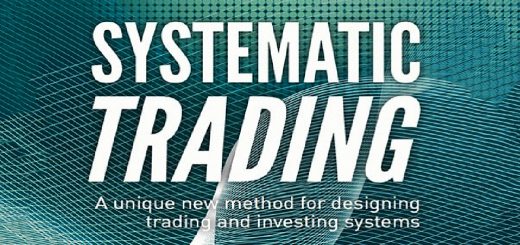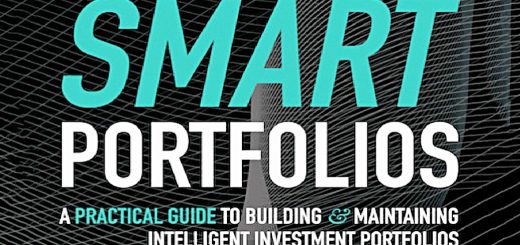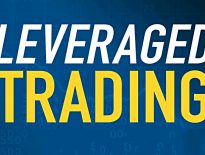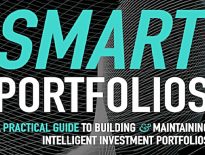Leveraged Trading 1 – Getting Ready

Today’s post is our first visit to a new book by Rob Carver, one of our favourite financial authors. The book is called Leveraged Trading.
Contents
Leveraged Trading
Like Benjamin Button, Rob Carver appears to be living his (literary) life backwards.
- I came across his first book – Systematic Trading – in 2018, and thought it was excellent if a little difficult for the average private investor.
I moved on to his second book – Smart Portfolios – which I also thought was excellent and simpler, though also quite long and complicated for most.
- I’ve just finished working my way through the second book in a series of nine articles.
I’ve also adopted a lot of the concepts from the book in my personal approach to investing, though it turned out that I was already using the central idea and had been for decades.
My plan was to circle back to the first book, but now Rob has published a third.
- He describes this as a Dummies’ Guide to the concepts within Systematic Trading.
You also need a lot less money to trade the systems from the second book (£1K this time vs. £100K last time).
So it only seems fair that I tackle the third book second, and then finally get to the first book third.
- That’s assuming of course that Rob doesn’t beat me to it with a fourth book.
Preface
Rob begins by describing how until fairly recently, leverage was not available to the private investor.
- Now we have spread betting and CFDs in the UK, and margin accounts in the US.
- Commodity and FX futures are also available in both countries.
With most of these products, you can go short as well as long.
Leverage is obviously dangerous and magnifies losses as well as winnings.
- Rob also says that leverage linearly increases your trading costs, though I think it’s a bit more complicated than that.
Rob also points out that most traders lose money.
- Depending on your survey, between two thirds and 90% of amateur traders are losers.
Rob says that the best protection against the dangers of leverage is to use a system.
- I agree, even if the system boils down to just a couple of rules about when to buy and when to sell.
Rob eats his own dog food on this one – he trades his own money using only systematic methods. (( Even his blog is called This Blog Is Systematic ))
The book is designed to introduce a simple but well-designed trading system.
- The system calculates the right amount of leverage, rather than using stop losses, which Rob says are unnecessary.
- It also controls trading costs.
- And it diversifies across many markets rather than obsessing over the perfect trading rule in a single market.
The book also describes how to combine human judgement with a trading system – something that Rob calls Semi-Automatic Trading.
The book does not deal with options. (( I hope that Rob’s next one does ))
Introduction
Rob says that amateur traders make three key mistakes:
- Over-confidence (high expectations)
- Remember that you are up against well-funded professionals
- Over-betting (taking on too much risk)
- Not simply by opening positions that are too large, but also by choosing the riskiest instruments (penny stocks and crypto, for example)
- Over-trading (trading too frequently)
- Rob found that a large UK spread-betting firm made $1,379 per year from clients with a year-end average balance of $500.
Leverage makes all these problems worse.
Leveraged products
Leverage is using borrowed money to invest (or in the case of trading systems, to speculate on asset prices).
- Most people only use leverage when they take out a mortgage to buy a property (this use of leverage is why so many people think that property offers good returns).
Rob uses the example of a rental property where the rent is more than the interest on the loan as an example of an investment with positive carry.
If a corresponding long trade would have positive carry, then the short would have a negative carry.
In trading, the equivalent of the deposit you put down to buy the house with a mortgage is known as margin (hence margin accounts, margin trading and less happily, margin calls).
The leverage ratio is the ratio of the amount you borrow divided by your deposit (margin).
- Rob prefers the leverage factor where the entire sum is divided by your deposit.
With a 90% mortgage, your leverage ratio is 9, but the leverage factor is 10.
- Leverage factors are the amount by which your profits (or losses) will be multiplied.
- Leverage factors of less than 1 imply that you are not fully invested (and are holding some cash).
Brokers quote margin percentages, which are the reciprocal of the leverage factor.
- So in the mortgage example, the margin percentage is 10%.
Brokers (and regulators) will decide the maximum leverage factor that you can use for trading, but you can always use less than that.
Each day your broker revalues (marks to market) your portfolio, and recalculates your leverage ratio.
- If it’s too high, you’ll be asked for more cash – a margin call.
If you can’t find the cash, your positions will be liquidated automatically, possibly not at the best prices.
- So you need to set your leverage ratio such that you don’t face too many margin calls.
Leveraged products have three key characteristics:
- They are often derivatives rather than physical (also known as spot or cash).
- They may be dated rather than open-ended.
- They are often traded over the counter (OTC) rather than on an exchange – your contractual relationship is with your broker.
Spread betting
Rob discusses the characteristics of margin trading, borrowing shares, FX trading, CFDs and futures.
- But the way that most UK investors will access leverage is through spread betting.
That’s because of the favourable tax treatment.
- The government doesn’t want people to be able to offset gambling losses against their income, so gambling profits (if you are lucky enough to make them) are also tax-exempt.
- Spread bets also avoid the stamp duty on purchases of individual shares (not on ETFs).
Spread bets are traded at a price (in £) per point (say a penny move in a share or a 0.0001 move in the £/$ exchange rate).
- Undated spread bets are called daily funded bets because there is an overnight financing charge to keep the position open.
There are also dated spread bets, based on futures (and options).
Getting ready
In Chapter Two, Rob looks at the decisions you need to make before you can begin trading.
- (Computer) hardware – Rob favours old and cheap equipment.
- I like to have a relatively new laptop (or 2 in 1 these days) and a decent desktop.
- I upgrade these about once every four or five years and try to keep the old models running for as long as possible. (( I’m currently selling off a lot of stuff that I’ve had for up to 13 years ))
- Rob uses a single screen, but I have four big ones – plus a couple of extras that I only switch on when things get busy.
- Data – Rob says he pays 0.003% for his data, but he doesn’t say at this point where he gets it from.
- The most basic service I have seen would cost me around double that, so perhaps Rob’s trading account is about double my net worth. (( I always calculate things in terms of my net worth – I’m after the big picture ))
- Which product to trade?
- Rob points out that futures are cheaper than spread bets (and CFDs), but they lack the tax advantages.
- Perhaps some combination of the two is possible. (( Though in the long-term, my annual CGT allowance is ear-marked for options trading ))
- Your broker
- Rob highlights a lot of potential problems with brokers, but at this stage, he doesn’t make any recommendations.
- He does recommend brokers based in the UK or US, rather than Israel or Cyprus.
- Rob has five brokers – one each for futures, spread bets, ISAs and SIPPs, and one he didn’t specify.
- How much money you will trade with.
- Rob’s starter system needs only £1.1K, but I probably wouldn’t open an account with that little.
Conclusions
We’re off to a good start – this is definitely an easier book to digest than Systematic Trading.
- We’ve covered about one-sixth of the book today, so we’ll most likely need another five articles to get through the rest, plus a summary.
Up next is an introduction to Trading Systems.
- Until next time.




















First, thank you for writing all these book summaries. is this advanced copy you are reading? amazon.co.uk only has it as pre-order for 29 October (assuming I am looking at correct book!)
That’s the right book. I pre-ordered directly from the publisher’s website and my copy turned up early. It’s not an advanced copy in the sense that I was asked to review it or anything.
I wouldn’t normally look at a book which is so new, but I’d just finished Smart Portfolios and was about to move on to Systematic Trading. Since the new book is a simplified version of that one, it made sense to tackle it first.